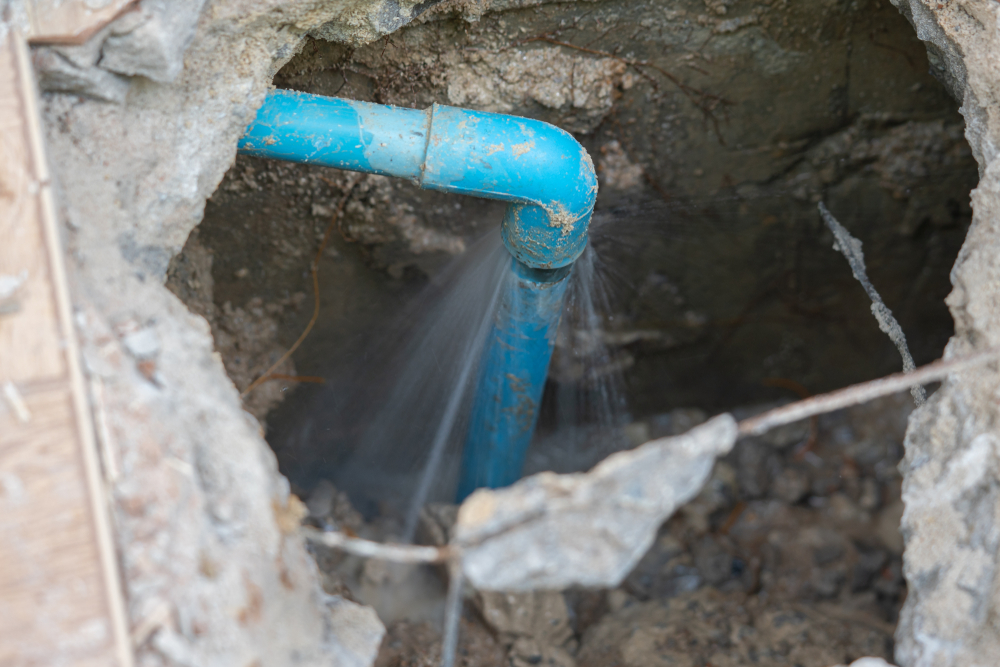What are your insights and beliefs on Top leak detection hacks?

The moment you locate a leakage, calling your plumber for repair work is the best remedy. However, some little water leakages might not be visible. If you can not find it with your naked eyes, right here are some hacks that help.
Early detection of leaking water lines can minimize a prospective calamity. In addition to saving you money, it will minimize the irritation and frustration.
Examine Water Usage
If you detect sudden adjustments, regardless of your intake being the exact same, it means that you have leakages in your plumbing system. An unexpected spike in your bill indicates a fast-moving leakage.
A consistent increase every month, also with the very same practices, reveals you have a sluggish leakage that's additionally slowly rising. Call a plumber to thoroughly inspect your building, specifically if you feel a warm area on your flooring with piping underneath.
Assess the circumstance and check
Homeowners ought to make it a practice to inspect under the sink counters as well as also inside closets for any type of bad odor or mold and mildew development. These two red flags suggest a leak so timely focus is called for. Doing regular inspections, even bi-annually, can save you from a significant trouble.
Examine the Water Meter
Every house has a water meter. Checking it is a guaranteed way that aids you discover leaks. For beginners, switch off all the water sources. Make sure no one will flush, utilize the faucet, shower, run the cleaning maker or dish washer. From there, most likely to the meter and also watch if it will change. Since no person is using it, there need to be no activities. If it moves, that suggests a fast-moving leak. Furthermore, if you detect no changes, wait an hour or 2 and also check back once again. This indicates you might have a slow leakage that could also be below ground.
Asses Outside Lines
Do not forget to check your outdoor water lines as well. Should water permeate out of the link, you have a loosened rubber gasket. One tiny leak can throw away lots of water as well as increase your water bill.
Do a Food Coloring Test
When it pertains to water intake, 30% originates from commodes. Test to see if they are running correctly. Drop flecks of food shade in the container as well as wait 10 minutes. There's a leak between the storage tank and dish if the color somehow infiltrates your dish during that time without flushing.
Examine for stainings as well as deteriorating as a lot of pipelines and devices have a life expectancy. If you suspect dripping water lines in your plumbing system, don't wait for it to rise.
The minute you locate a leak, calling your plumber for repairs is the best service. Some tiny water leakages might not be visible. Checking it is a guaranteed method that aids you uncover leakages. One little leak can throw away bunches of water and surge your water costs.
If you suspect dripping water lines in your plumbing system, don't wait for it to rise.
How to Know If Your Home Has a Hidden Leak
Water Meter Reveals Inexplicable Water Usage
If you’d like to test whether or not there’s a leak somewhere in your home, you can do this using your water meter. Here is how to conduct the test:
Don’t use any water in your home for at least 30 minutes; this also means not turning on faucets or water-using appliances.
Go outside, and check your water meter for activity.
If your water meter shows that there was activity, even though no one was using any water, this proves that there is a leak in your home.Visible Mold or Mildew Growth
Leaks behind walls create moist, dark environments that allow mold and mildew to grow and thrive. Eventually, you might see mold growth forming on the wall closest to a hidden leak.
If mold is growing in an area that receives a high amount of moisture, such as a bathroom, it may simply be an indication that better ventilation is needed. However, if you see mold growth on a wall or the ceiling in an area where you would not expect, you probably have a hidden leak.
Musty, Mildew Odor
Sometimes you might not be able to see the mold or mildew that is growing as a result of a leak. However, the smell can give the problem away just as easily. If you catch a whiff of something musty, there’s a good chance that old water is collecting somewhere in your home that you can’t see.
Stained/Warped Walls, Ceilings, or Floors
When your home soaks up water, a variety of red flags can become visible, including ceiling stains, bubbling drywall, warped walls, and sagging floors. While these issues can be caused by excess humidity, they can also be signs that a pipe or plumbing connection has started leaking behind your walls.
Inexplicably High Water Bill
After a while, you get a general sense for what your water bill should be. If you own a pool or sprinkler system, your bill will tend to be higher during summer. However, if you receive a water bill that seems especially high, and you can’t figure out what caused it, then you may have a hidden leak somewhere that’s increasing your bill.
https://www.plumbingjoint.com/blog/2019/july/how-to-know-if-your-home-has-a-hidden-leak/

I am very involved in Detecting hidden plumbing leaks and I hope you enjoyed reading the new piece. Appreciated our article? Please share it. Help somebody else discover it. Bless you for your time. Please come visit our site back soon.